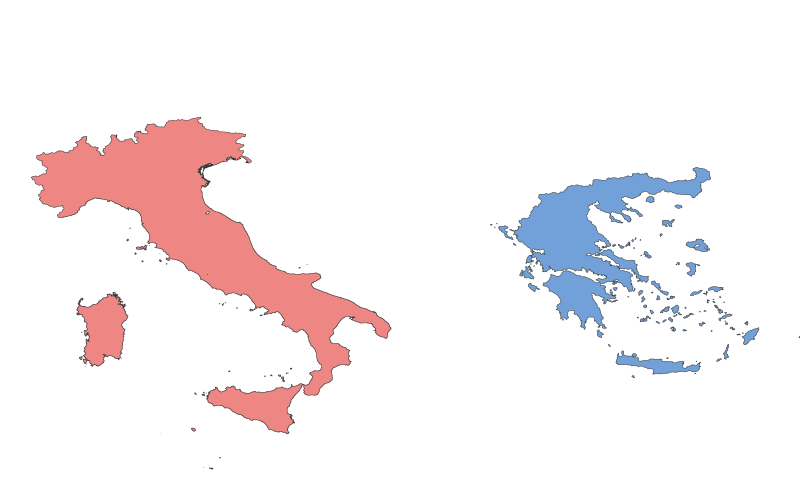Italy vs. Greece: A Geographical Comparison

Comparison Table
| Category | Italy | Greece |
|---|---|---|
| Location | Southern Europe, bordered by France, Switzerland, Austria, and Slovenia | Southeastern Europe, bordered by Albania, North Macedonia, Bulgaria, and Turkey |
| Size | 301,340 km² | 131,957 km² |
| Climate | Mediterranean (coastal), Alpine (north), temperate (central) | Mediterranean (hot summers, mild winters) |
| Natural Resources | Coal, mercury, zinc, potash, marble, arable land | Bauxite, lignite, magnesite, petroleum, marble |
| Urban Development | Highly urbanized, major cities: Rome, Milan, Naples | Athens is the largest urban center, followed by Thessaloniki |
| Transportation | Extensive rail and road networks, major ports (Genoa, Naples) | Reliant on ferries for islands, major ports (Piraeus, Thessaloniki) |
Description
Italy
Italy, located in Southern Europe, is a country rich in history, culture, and natural beauty. Known as the birthplace of the Roman Empire and the Renaissance, Italy boasts iconic landmarks such as the Colosseum, the Leaning Tower of Pisa, and the canals of Venice. Its diverse geography ranges from the Alps in the north to the sun-drenched beaches of the south. Italy's economy is one of the largest in the Eurozone, driven by industries like fashion, automotive, and tourism. The country is also famous for its cuisine, including pasta, pizza, and wine.
Greece
Greece, situated in Southeastern Europe, is often referred to as the cradle of Western civilization. It is home to ancient ruins like the Acropolis and Delphi, as well as stunning islands such as Santorini and Mykonos. Greece's climate is predominantly Mediterranean, making it a popular tourist destination. The economy relies heavily on tourism, shipping, and agriculture, particularly olive oil production. Greek culture has profoundly influenced art, philosophy, and democracy, with a vibrant modern lifestyle that blends tradition and modernity.